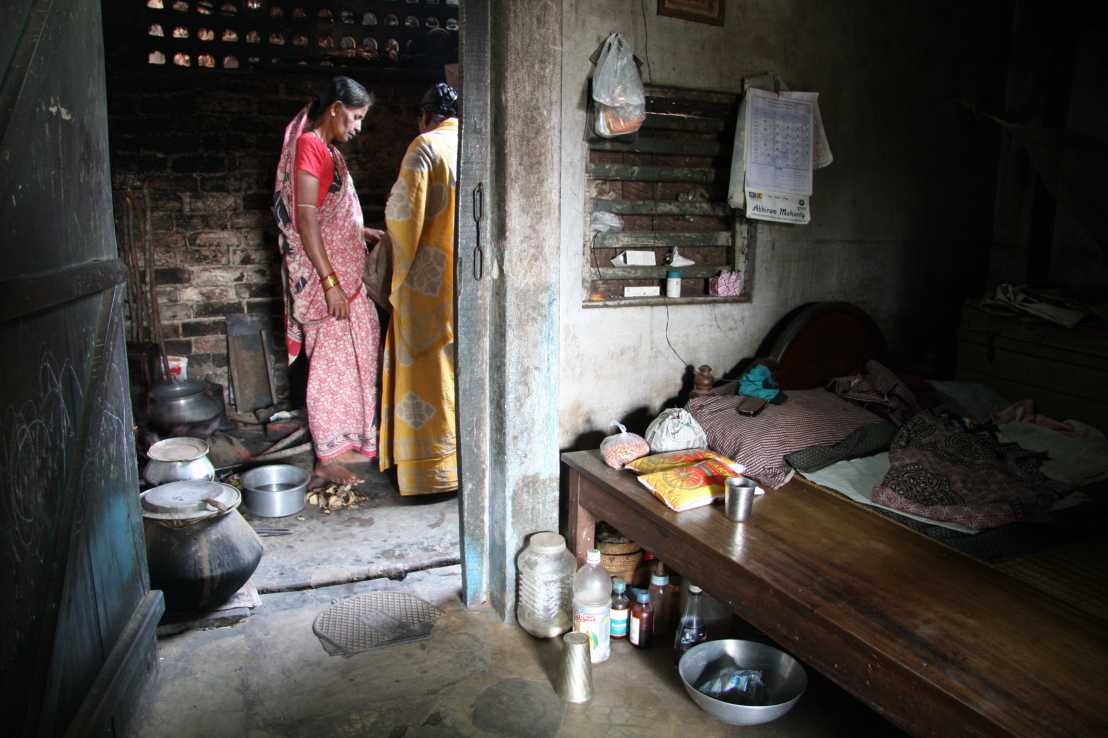E4D Fellow: Andrea Hagn
Politicising the urban
The politics of slum re-development in the temple city of Puri, Odisha

Doctoral exam: February 2018
Supervisors
Prof. Dietmar Eberle (Institute of Design and Architecture)
Prof. Dr. Christian Schmid (Chair of Sociology)
Dr. Swapna Banerjee-Guha (former Professor of Development Studies, School of Social Sciences, external page TISS Mumbai)
Project supervision
Dr. Margrit Hugentobler (ETH Wohnforum – ETH CASE Centre for Research on Architecture, Society & the Built Environment)
Partner institutions
ETH Wohnforum – ETH CASE Centre for Research on Architecture, Society & the Built Environment, Network City and Landscape (NSL), Department of Architecture, ETH Zürich
Chair of Sociology, Network City and Landscape (NSL), Department of Architecture, ETH Zürich
external page School of Social Sciences, Tata Institute of Social Sciences, Mumbai
Project description

The fundamental research problem that motivated this thesis is the contradiction between the rhetoric of inclusive development and the actual practices which can be observed when it comes to slum re-development in many cities in the global south. In my thesis, I proved that the Indian metropolitan reality of violent evictions has taken roots also in medium sized cities. This did not occur at some time. It occurred after the Indian government had declared the paradigm of inclusive urban growth.
For my thesis, I used two flagship slum re-development schemes of the Manmohan Singh government (2004-2014) as an entry into exploring the localisation of India’s new urban policy and its role in transforming medium sized cities. This is a class of cities that is currently under-researched and under-theorised. For practical reasons, I have focused on one, possibly the most critical sector of current urban re-development ambitions: ‘the shelter and livelihoods of millions of the urban poor’ (Banerjee-Guha 2016). My emphasis has been on revealing the real-existing conditions of, and practices around slum re-development in one medium sized city: the temple city of Puri, Odisha.
The guiding research question was what makes urban poor communities successful in accessing slum re-development schemes? This question embodies two assumptions. Firstly, it reflects that state resource allocation in India is neither universal nor rights-based. Access is not a legal issue. This is particularly true for slum improvement and the provision of basic services to the poor. It assumes that slum improvement schemes, despite deficiencies in planning and implementation, actually are implemented. And that therefore the question of what makes poor people successful or of what aides their selection is relevant.
Unfortunately, I had to find out that
- Slum improvement schemes – if they are implemented – do not necessarily lead to an improvement in the living and housing conditions of the target group. In the case of the first scheme that I analysed, Basic Services to the Urban Poor, or BSUP, the assumed privilege of access materialised as a poisoned gift to the beneficiaries.
- Implementation is not guaranteed.
- Worse than non-implementation is that slum improvement schemes, in the process of policy localisation, become vehicles in the local power play.
The second scheme that I analysed, Rajiv Awas Yojana or RAY, was celebrated for representing a new era of poverty reduction, and as an expression of a right to shelter which so far had been refused to the urban poor (Roy 2014). On the ground, it got entangled in the local politics of promises. Despite better knowledge, poor people cling to the hope of owning a proper house in the city. Playing with this hope in a context of extreme housing scarcity allows those in power to run a machinery which predominantly protects their own material and political interests. In this way, RAY could become the platform to prepare the re-appropriation of inner-city slum land.
The thesis adapted a constructivist grounded theory approach and methodology (Bryant and Charmaz 2007; Charmaz 2014; Charmaz 2006; Charmaz 2000; Morse, Stern et al. 2009). Between February 2011 and December 2013, three rounds of field research of between four and six weeks were conducted. To generate data, 107 qualitative interviews, expert interviews, and focus group discussions were carried out involving stakeholders at neighbourhood, city and state level including civil-society organisations. Throughout the research process, qualitative mapping served as analytical tool.